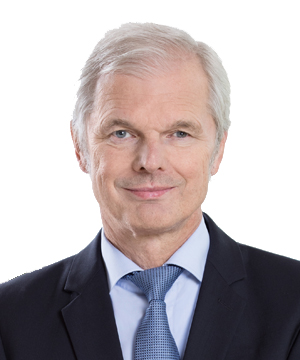As alternative capital continues to play an increasingly important role in the natural catastrophe space, Hannover Re’s Chief Executive Officer (CEO) Ulrich Wallin has discussed the potential for these markets to be utilised in other areas of the reinsurance industry.
 Speaking in an interview with Reinsurance News, Wallin noted that, following 2017’s catastrophe losses, “neither traditional nor ILS (insurance-linked securities) markets have withdrawn any capacity,” resulting in a “competitive market with more supply than demand.”
Speaking in an interview with Reinsurance News, Wallin noted that, following 2017’s catastrophe losses, “neither traditional nor ILS (insurance-linked securities) markets have withdrawn any capacity,” resulting in a “competitive market with more supply than demand.”
Largely due to this abundance of capacity, in combination with the alternative capital markets’ exclusive focus on natural catastrophe risks, rate increases at the January and mid-year renewals have failed to materialise to the extent that reinsurers had anticipated.
Wallin explained that, while competition generally remains higher where ILS is playing, “there is also competition in the casualty business, particularly because the results outside commercial auto have been pretty good in recent years. And many of the market players want to increase their involvement in casualty, mainly to get diversification away from the more competitive short-tail classes.”
The longer-tail nature of casualty business offers ILS investors diversification outside of the highly competitive natural catastrophe space, but it also presents fresh challenges for market players.
Wallin continued: “I think it can go outside natural catastrophe risks, but somebody has to take the tail risk on long-term business in order to make it writable for the alternative capital. Because if you have an alternative capital structure – which might be a cat bond or collateralised reinsurance –what you do you invest your money as collateral, and then you get a spread premium, say for argument sake of 500 basis points.
“If you have the long-tail risk, the ceding company would not be able to return that capital to you after one year because there is the risk that losses may develop after year end. If you take your collateral back there’s no cover for such loss development because you haven’t got a balance sheet and a capital base. So that then would mean that the ceding company would need new capital again for the next underwriting year or the next accident year.
“So you have to invest two times the capital as collateral but get the premium only for the current year. That reaches your return from 500 base points to 250. And therefore you can see that on long-tail business, where the capital markets have to cover the full tail exposure, it wouldn’t work on a collateralised basis.”
Casualty risks often include durations and liabilities that stretch into decades and so, while this class of business offers one avenue for diversification, the challenge lies in convincing investors to lock up their capital for the duration of these long-tail risks.
Another potential avenue for ILS expansion is cyber business, where the emerging nature of the risks, particularly in regard to the silent cyber exposure from traditional P&C business, are extremely difficult to quantify and thus require a large amount of capacity.
“We have interesting discussions on the cyber business,” said Wallin. “Whether or not we can use alternative capacity for cyber in particular for the accumulation exposure … There is the thought that maybe the capital markets can help. But we need some kind of modelling of expected losses, where model agencies start to look at models there.
“So maybe that is an area of expansion for the ILS market. It hasn’t happened yet, but it is certainly something we are looking at.”
As reinsurance pricing in the natural catastrophe space continues to be driven down by competition and excess capacity, there will be growing pressure for the alternative capital markets to innovate and expand further into these new areas.
Commenting on current market conditions, Wallin noted that “the vast majority of participants cannot tolerate negative results for an extended period,” and predicted that “If rates are further squeezed then there will be a reaction at one point in time.”


